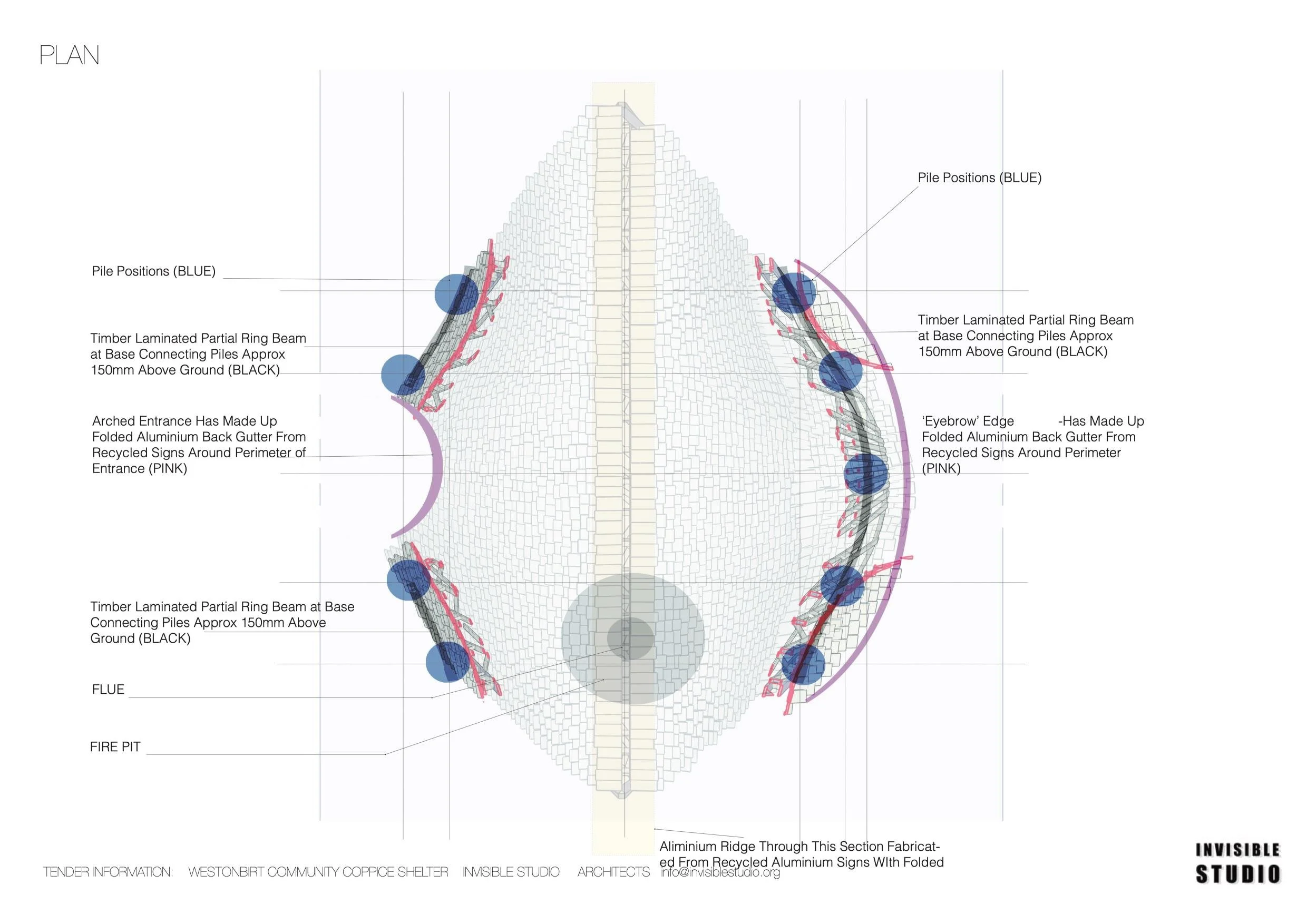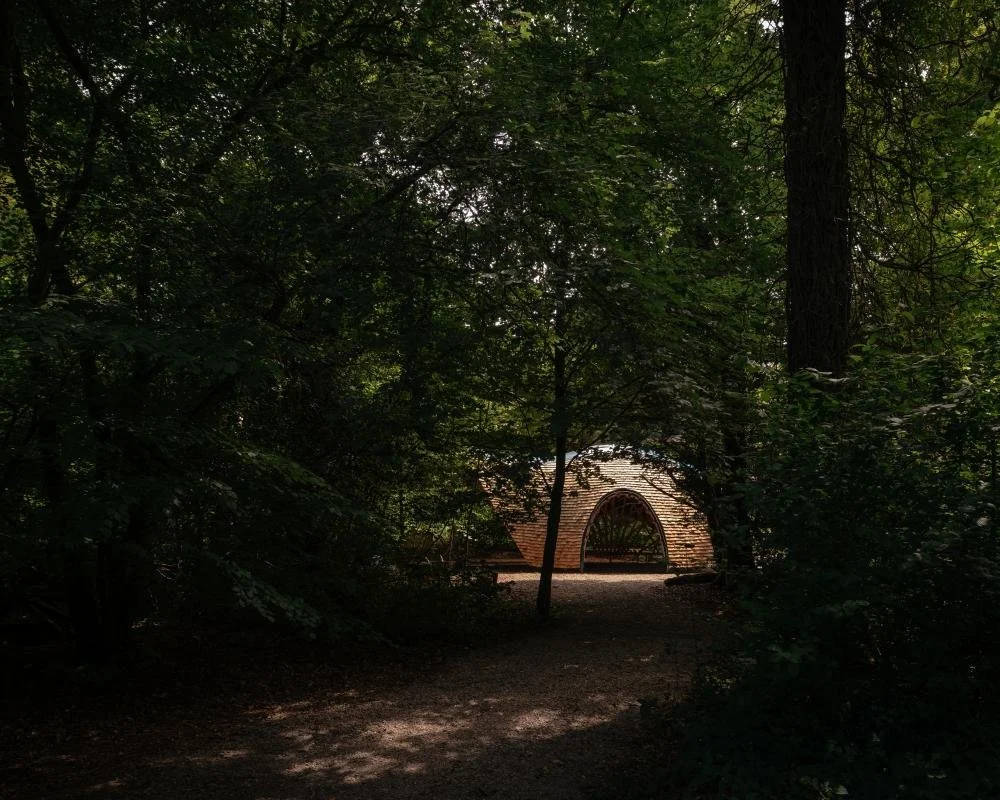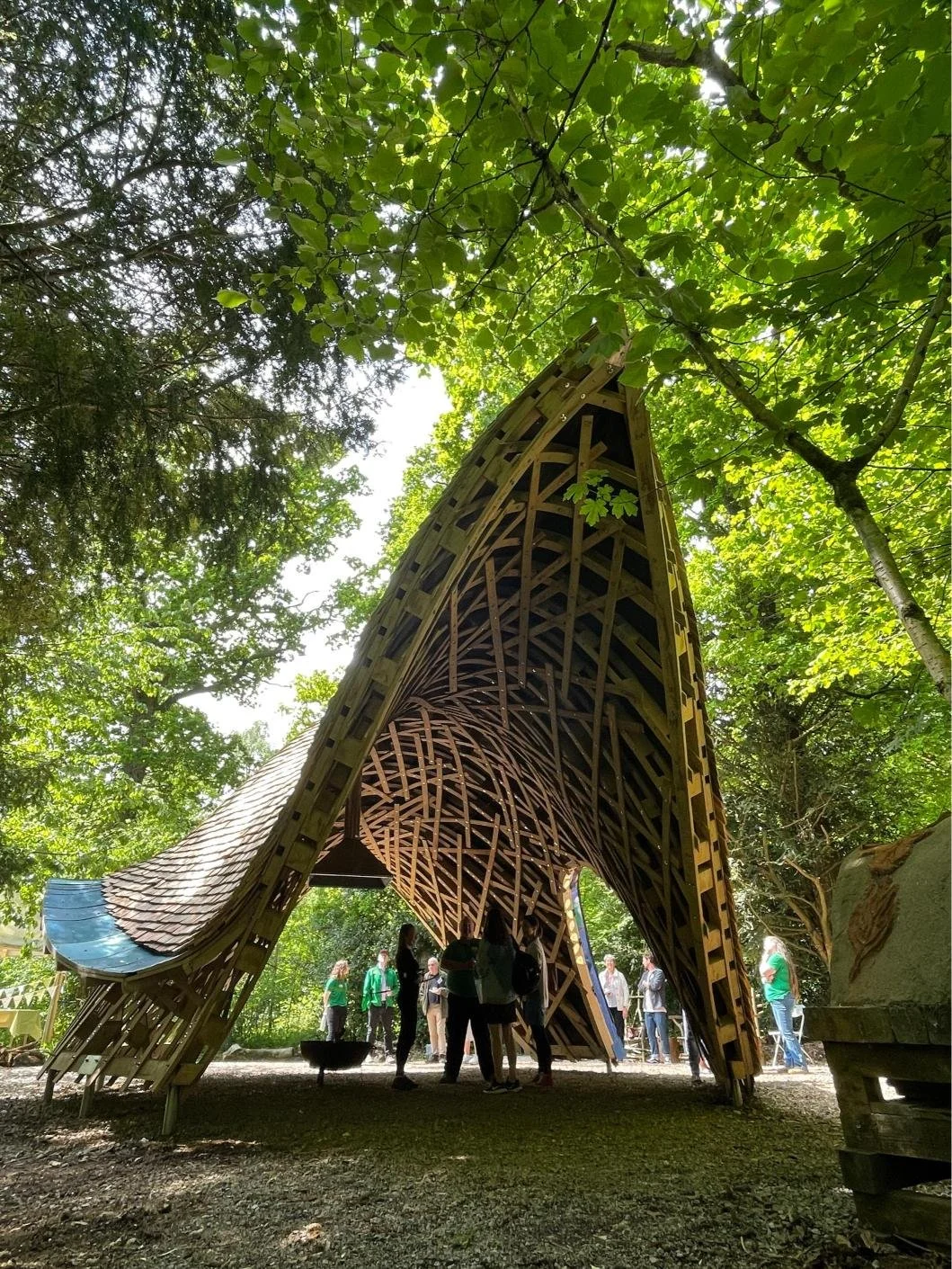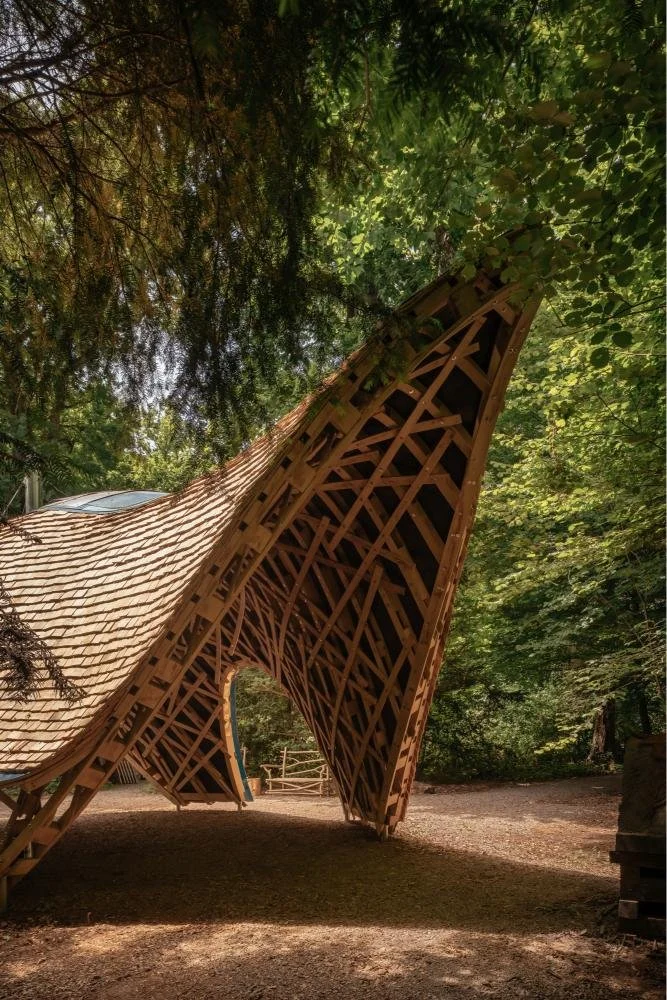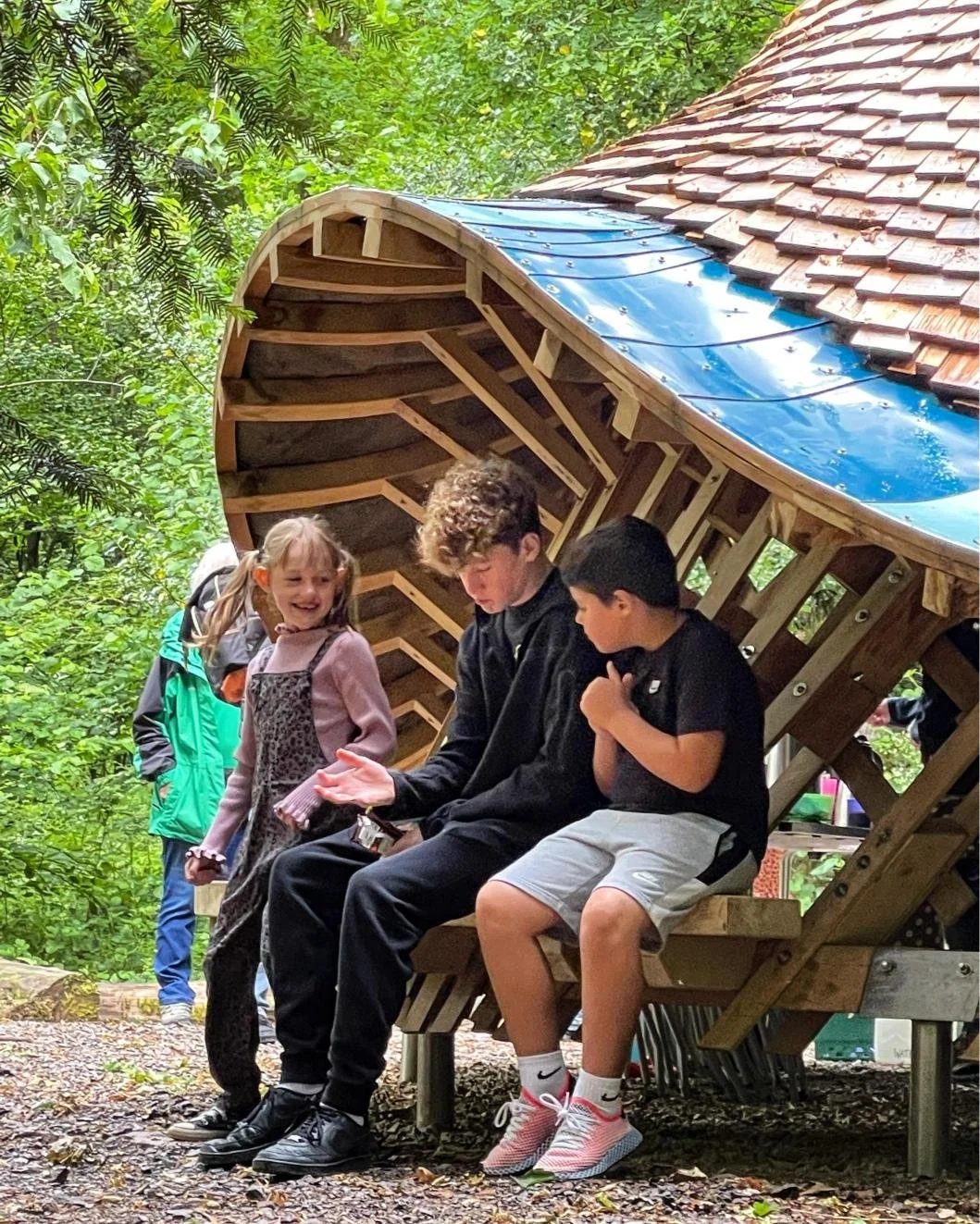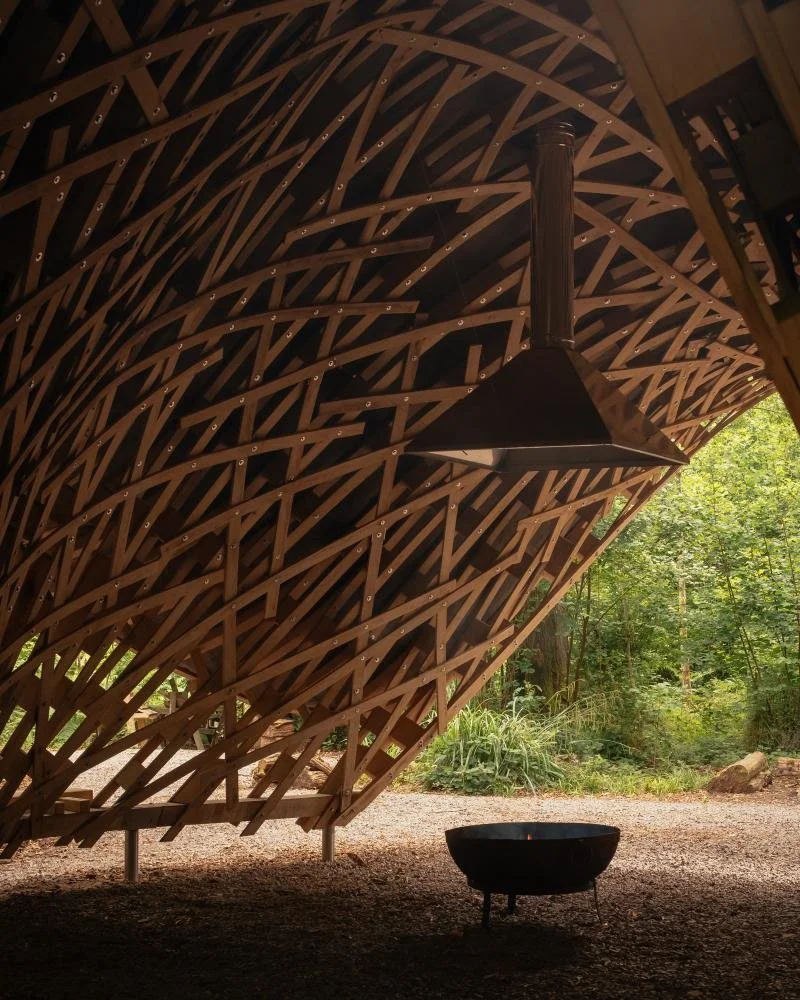Westonbirt Community Shelter:
A Model of Collaborative, Sustainable Architecture
The Westonbirt Community Shelter, designed by Invisible Studio in collaboration with timber structure specialists Xylotek, embodies the ethos of participatory design, sustainability, and social impact that Invisible Studio holds central to its practice. This project represents the intersection of architecture, community engagement, and environmental stewardship, reflecting the values of inclusivity, co-creation, and the mindful integration of design with nature.
The shelter, located at Westonbirt, The National Arboretum, was constructed using locally sourced timber from the site’s routine woodland management cycle, alongside recycled materials such as old aluminum signage. This not only minimizes the project’s carbon footprint but also demonstrates a commitment to sustainable practices by utilizing existing resources in an innovative way. The project thus exemplifies how architecture can both reflect and respect the local environment, while demonstrating the potential of sustainable, low-impact design.
True to Invisible Studio's ethos of co-creation, the design and construction of the shelter involved hundreds of participants from diverse and often marginalized community groups. Through a range of engagement techniques—sketches, models, digital scans, mock-ups, and onsite fabrication—these participants were actively involved in every stage of the project. The process enabled individuals with varying skill sets to engage with traditional green timber carpentry techniques, including steam bending, laminating, and shingle making. This inclusive approach provided a platform for skill development, pride, and personal achievement, aligning with Invisible Studio's commitment to designing with, not just for, communities.
The final structure—a hyperbolic paraboloid form—blends organically into its woodland context while providing shelter and views into the surrounding landscape. Its seemingly spontaneous aesthetic was intentionally designed to allow flexibility and openness, allowing community users to feel a sense of ownership and connection to the space. The shelter thus becomes not just a physical structure but a symbol of collaborative effort and the positive outcomes of inclusive architectural practices.
The project was funded through donations from individuals, grants, and support from organizations like the Friends of Westonbirt Arboretum and Forestry England. It aligns with Invisible Studio’s ongoing work at Westonbirt and Hooke Park, where community engagement and sustainable, innovative design practices have been central to past award-winning projects. The shelter serves as a testament to the power of collaboration, demonstrating the potential for architecture to inspire and transform communities while remaining rooted in local materiality and environmental responsibility.
view film here


